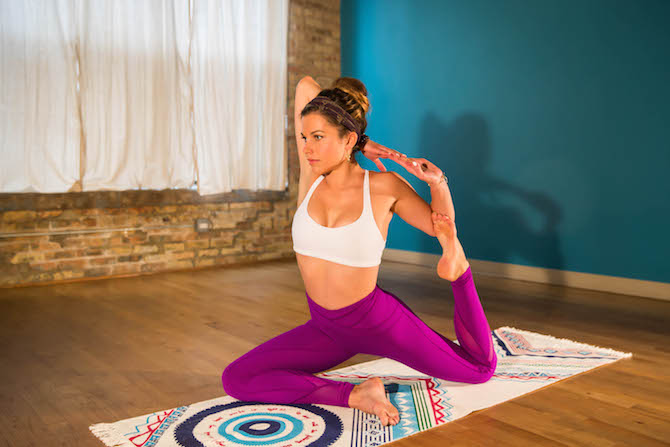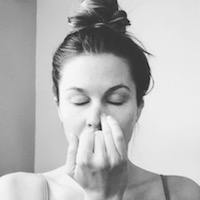In college, I took an Asian philosophy course.
To say it was by far my favorite class is an understatement.
In this class, I had what I remember to be my first encounter with yoga by learning yogic philosophy. One of the other interesting ancient concepts I learned about during the class was the Daoist concept of wu wei—action without struggle.
Shortly after the class, I started going to yoga classes and a little later on I found myself completing a yoga teacher training. Recently, I have been enthralled with studying the modern research and science of the flow state. When I first learned about flow state, I immediately thought back to the concept of wu wei. Everything seemed to be connected.
What is “flow state?”
In short, flow state is energized focus, full involvement, and enjoyment in the process of an activity. We are moving and thinking effortlessly. We have amplified levels of concentration. Our perception of time changes. Discomfort goes unnoticed. Stray negative thoughts do not enter the mind. We feel united with our surroundings. Awareness is one-pointed. We are solely focusing on the task at hand. Our creative juices are pouring out. Our skill is perfectly matched to the challenge at hand. We are experiencing peak performance. Our sense of self has disappeared. And we feel…Flow-y.
As I pondered the above aspects of flow state, I realized there is a lot of overlap between flow state and what happens during a yoga practice. While diving into my flow state research further, I started to connect the dots. The flow state and yoga have a lot of overlap because a yoga practice includes a lot of flow state triggers such as concentration, clear goals, immediate feedback, absorption, and loss of self-consciousness. These triggers among others are what allow us to enter into the flow state. During a well-crafted yoga class, we have a good chance of entering the flow state because of this.
When I am doing my home practice or teaching a class, I craft the class with the goal of inducing the flow state. One of the ways I do this is with repetitive (I am talking 10 rounds or more), rhythmic sequences.
After the fourth round of completing a sequence, we will likely have the sequence memorized. At this point, we do not have to think about where our bodies will move next. However, it is still challenging. Our heart rates are increasing. Our muscles are going to “their edge” during each pose.
After the sixth or seventh round, we will likely become totally present and connected to our breath and the movement. Each movement will seamlessly and effortlessly follow the prior movement. We become more aware of the sensations in our bodies. We are fully encapsulated in the present moment. And, you guessed it—we feel the flow.
I enter the flow state most days I practice. I walk away with a “yoga high.”
Why is that significant? First of all, the flow state is inherently enjoyable. The flow state is also well-documented to lead to overall higher levels of satisfaction in life, optimal performance, greater productivity, and increased creativity. We can utilize the flow state we were able to enter into during a yoga class after the class has ended (there is research that the flow state continues after actually being in the flow state!).
Once we get home, we have a better chance of being able to break through the writer’s block we were having prior to class or knock out that work project with a looming deadline that we have been procrastinating on or feel completely immersed while having a deep intellectual conversation with a best friend.
So, all the above sounds pretty wonderful. Now the question is: How? How can we increase our chances of entering the flow state during yoga? Below are a few tips for having the best chance of entering into the flow state while we are on our mats.
Six tips to get into the flow state during our yoga practice:
- As mentioned above, one of my favorite tips is to repeat short sequences. These short sequences allow our minds to take a break but not go on autopilot. We do not have to think about our next move because after several rounds, the sequence will be memorized. This is so huge for entering the flow state. A tip for practicing this at home: Try setting an alarm clock for five minutes so the mind does not wander wondering how many more rounds to do. Just make sure the short sequence is challenging!
- Get creative! Do a pose or a sequence slightly different and slightly more challenging this time around. The trick is to find something that is not too challenging but also not so easy that the mind is on autopilot. We should aim for finding that sweet spot of matching the challenge level and skill level—or going to our unique edge. An example is to stand on a yoga block in tree pose. Believe me, no one is thinking about anything else while doing this variation of the pose.
- Focus on pratyahara. Pratyahara is the withdrawal of the senses. During pratyahara, we are focusing solely on our yoga practice instead of the distracting loud heating system or the people whispering in the lobby. To enter into this stage, it is helpful to close the eyes at the beginning of practice and check-in with how we are feeling and what we are feeling.
- Focus on dharana. Dharana is concentration. After turning inward during pratyahara, we are able to become present with our breath and our bodies’ sensations in the moment. Really focus on each inhale and exhale. Find new bodily sensations that have not been felt before. In this stage, we are able to become singularly focused on our yoga practice.
- Meditate! Yoga is not just poses. Meditation is a big part of the yoga practice and definitely a trigger to the flow state. In meditation, we are completely absorbed. During meditation we lose a sense of self-consciousness. As mentioned above, absorption and loss of self-consciousness are two triggers for entering the flow state.
- Last, but definitely not least, focus on the breath. Focus on breathing into where sensation is felt and maintain inhales and exhales that are long and smooth. Doing so helps us become more aware and deeply rooted in the present moment.
Quick tip: If you are trying to enter the flow state and it is your first yoga class, your skills may need to build up before you can effortlessly move from one pose to the next while simultaneously linking the breath to the movement.
If you have not tried yoga but would like to, I suggest going to an intro to yoga series to build a foundation. After a little practice, you will be entering the flow state in no time.
Happy flowing to all! Check out some of my favorite resources below:
Book: Flow by Mihaly Csikszentmihalyi
Book: The Rise of Superman by Steven Kotler
TED Talk: “Flow, the secret to happiness” by Mihaly Csikszentmihalyi
Flow Genome Project
~
Author: Colleen Lind
Image: Courtesy of Author—Photo by Mary Carol; Instagram @colleenmarieyoga
Editor: Sara Kärpänen









Read 5 comments and reply